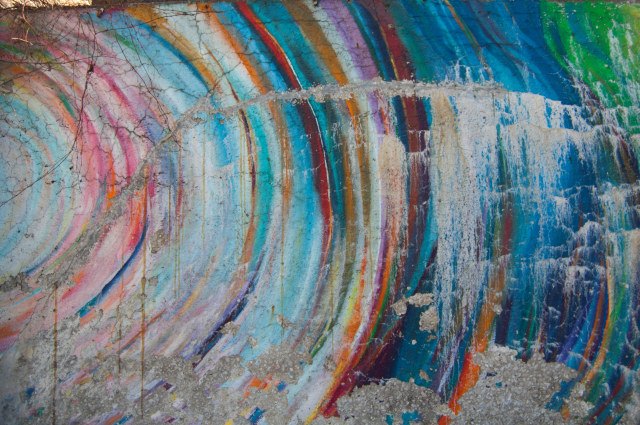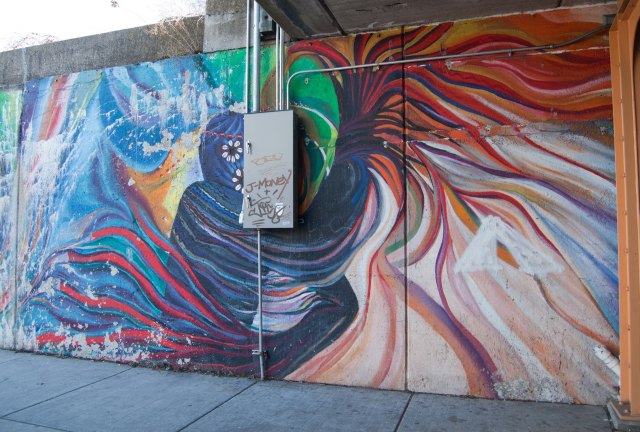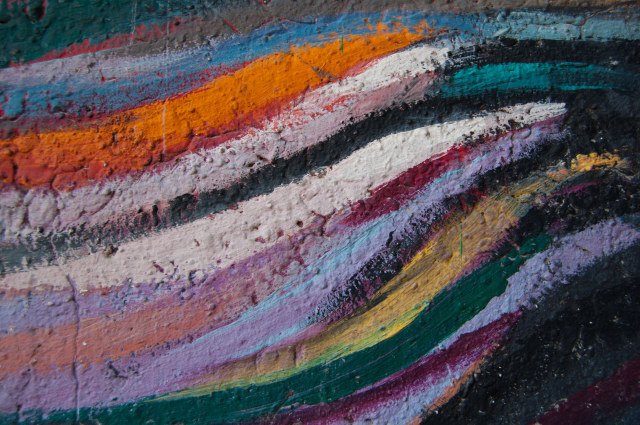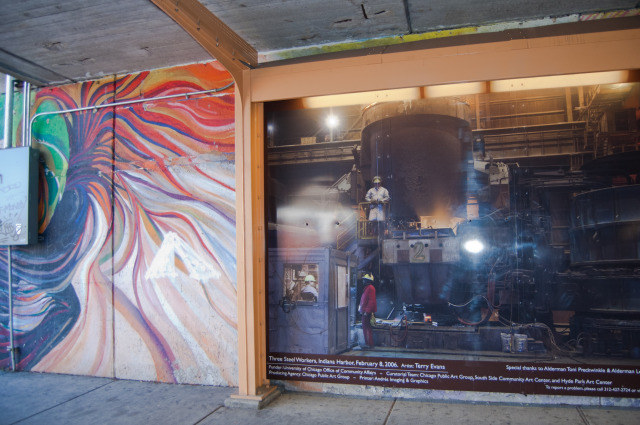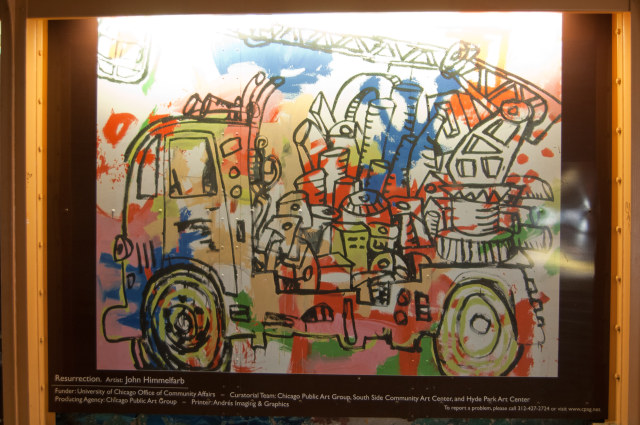Hyde Park Murals Conceal And Reveal
By Laura M. Browning in Arts & Entertainment on Mar 29, 2010 6:00PM
Today we wanted to show you some of our favorite viaduct murals in the city, the ones that run along the 53rd Street underpass in Hyde Park, only to find that they've been mostly covered up. But it’s not all bad news, because the Chicago Public Art Group (CPAG) has installed temporary murals in front of the old ones along the 53rd Street Metra viaduct in Hyde Park. These temporary panels feature large format digital prints by Chicago artists Terry Evans and John Himmelfarb (a total of four artists are represented under the 53rd and 55th Street underpasses).
The Metra Electric District line has four stops in Hyde Park, and the underbelly of each stop forms a kind of blind arcade, a perfect concrete canvas. The 53rd Street stop used to feature work by Mirtes Zwierzynski, whose rich swirls of color be-ribbon the cold concrete panels, now largely hidden behind the temporary panels of Evans’ and Himmelfarb’s work. Though you can still enjoy some of the most stunning panels of Zwierzynski’s original mural, sadly, a graffiti-covered electrical box (new within the last couple years) now partially conceals one of her shadowy, conch-mouthed figures.
Terry Evans’ photographs belong to collections at major museums including the Art Institute. The photographs displayed here examine steel mills in East Chicago, Indiana—not far from the southeastern-most stop on the Metra Electric line. Imagine a person getting on board at 57th Street to catch a morning Loop-bound train—she pauses to look at the photographs and is suddenly, unknowingly connected to her seatmate, whose father perhaps once worked at that very steel mill.
John Himmelfarb works primarily as a painter and sculptor, and the works under the viaduct are actually just photographs of his paintings, and lack the immediacy of paint on concrete and even of Evans’ photographs. One painting shows a truck outlined in black and daubed with bright flashes of pink and red and blue, its bed crammed full of unknown items, like a junkyard on wheels. Unfortunately, the viaduct’s poor lighting and the huge glares dull the effect of this painting and the other panels, so they are easy to miss, especially during the rush of a daily commute.
Though Himmelfarb’s work is perhaps more visually connected to street art than Evans’ photographs, it puts too much distance between art and viewer. As you’re rushing for the train, why bother to stop a look at a photograph of a painting slapped on a temporary wall that’s standing between you and a concrete wall on which paint has already been beautifully spread?
But for all our complaints about the decidedly un-museumlike atmosphere down here on 53rd Street… isn’t this what public art is all about? Zwierzynski says on the CPAG Web site that “art, in all its forms, belongs to the public space and should not only be confined to specialized institutions.” Even poor lighting and less than ideal conditions are better than no art at all, so that perhaps a person who rushes to catch the morning train will pause for a few minutes on their way home to examine these works of art. And just maybe they will create a deeper connection to this art and to Chicago artists whose works the commuters might otherwise not know.
We love that these temporary art constructions feature Chicago artists with regional connections, and hope that they get the attention they deserve from harried passersby—and that someday they’ll come down to reveal the richness behind them.
CPAG’s online map will help you locate these and many other murals around the city.
